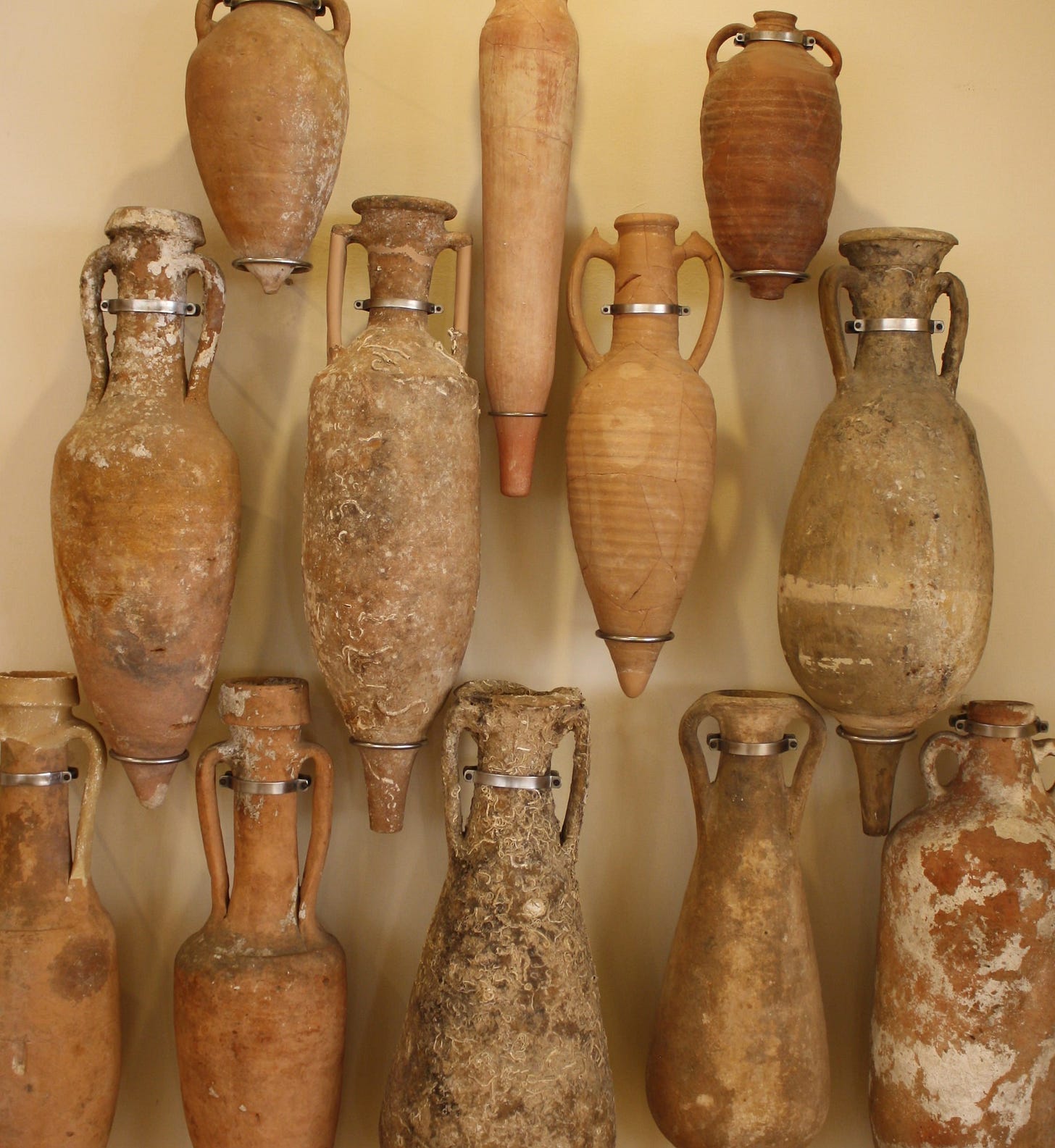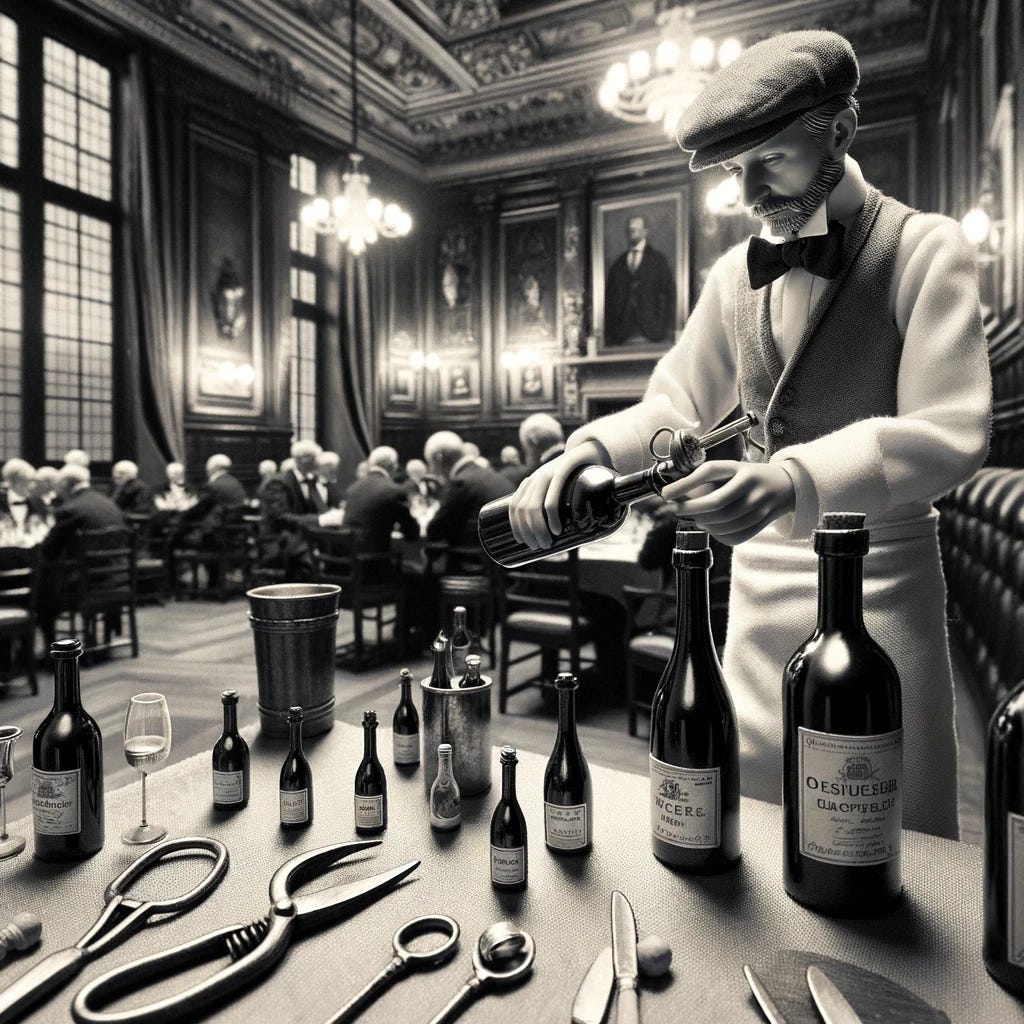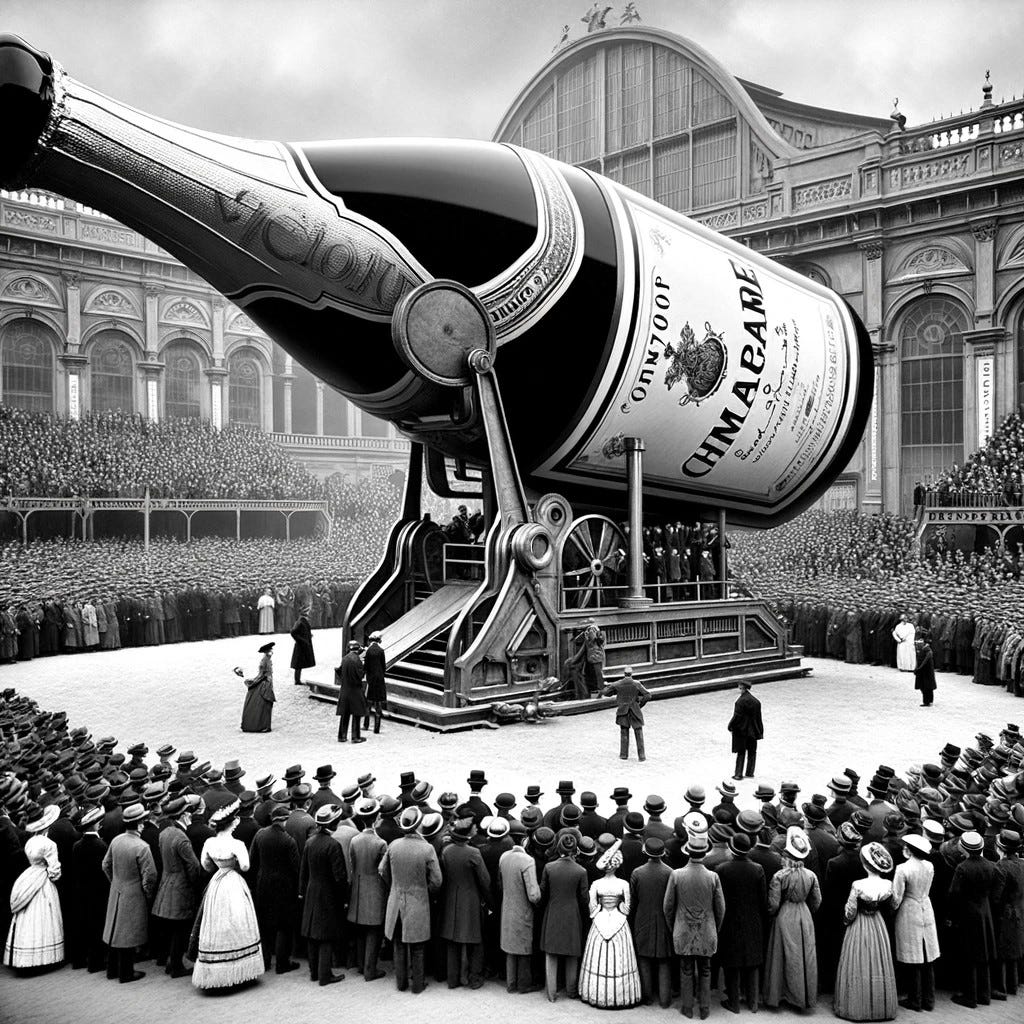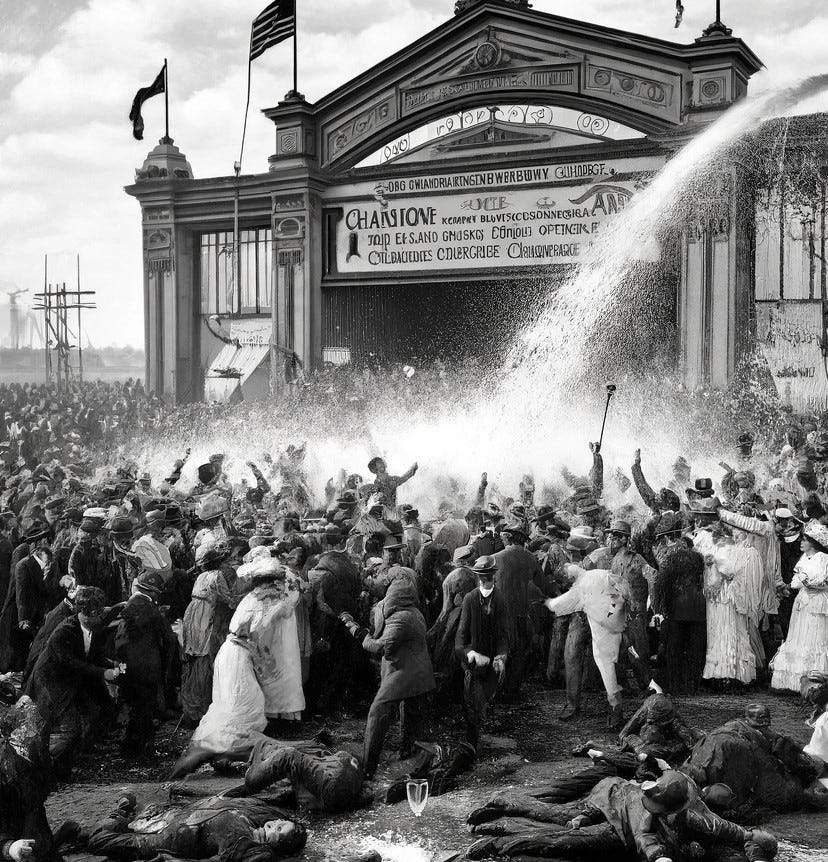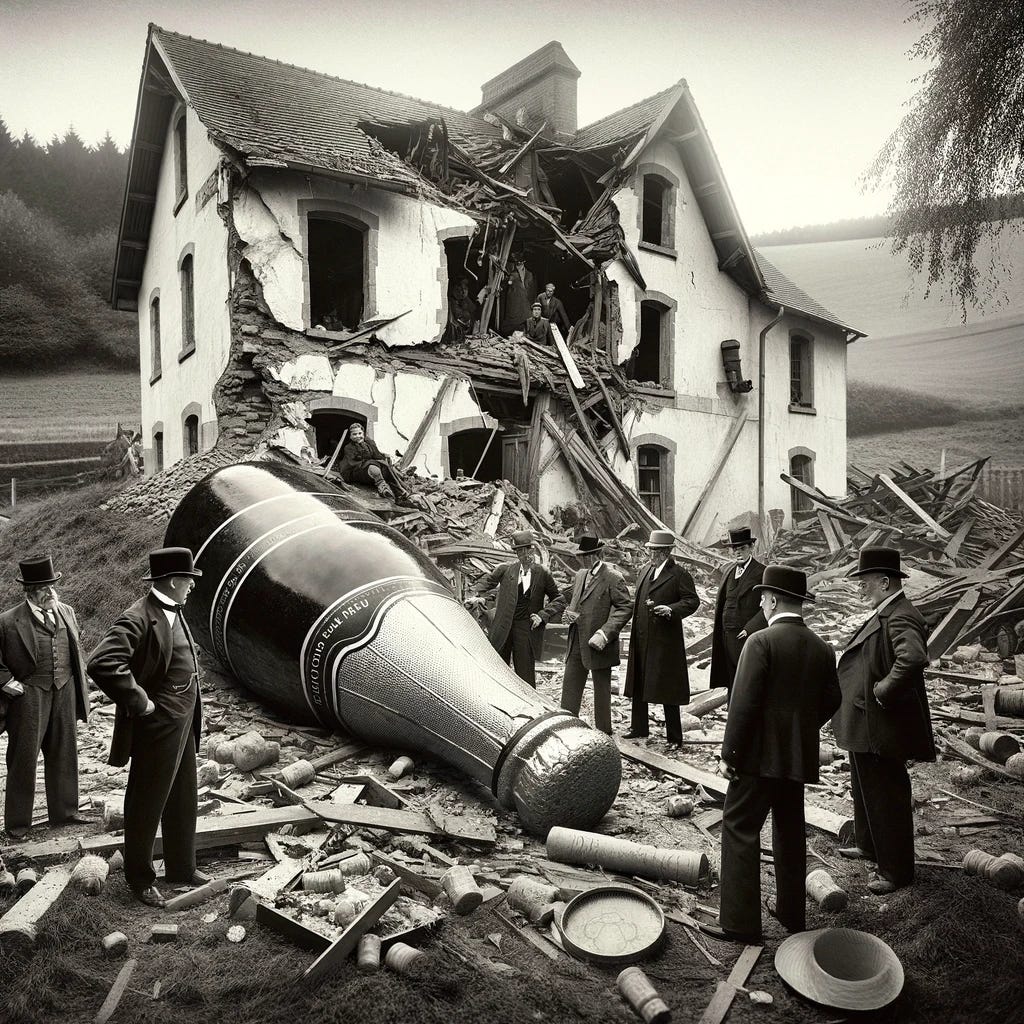The Fascinating Evolution of Wine Bottles
From Tiny Trends to Towering Traditions
In the grand tapestry of oenology, the history of the wine bottle is as rich and varied as the wines it has contained. The journey from ancient clay amphorae to today's sleek glass containers reflects not just technological advancements but also shifts in cultural tastes and dining habits.
A Brief Bottle Background
Wine storage has evolved significantly over the centuries. Early civilizations stored wine in clay amphorae or wooden barrels, but with the invention of the glassblowing pipe around the 1st century BCE, glass bottles began to emerge as a preferred medium.
The use of bottles for storing wine represents a pivotal moment in the history of winemaking and consumption. While the exact origins of bottled wine are somewhat shrouded in the mists of history, it is clear that the transition from bulk storage and transport methods (such as amphorae and barrels) to individual bottles marked a significant leap in wine culture.
The earliest known instances that we know of that wine was stored in glass bottles, date back to the Roman Empire, though these were rare and not standardized in shape or size. Glassblowing techniques of the time were rudimentary, limiting the production of glass vessels. It wasn't until the 17th century, with advancements in glassmaking technology, that wine bottles as we recognize them today began to take shape - literally.
The introduction of coal-fired ovens enabled glassmakers to produce stronger, thicker glass, allowing for the creation of uniform bottle shapes that could be stacked and stored more easily. This technological advancement coincided with the discovery that wine could mature and improve over time when stored properly, a revelation that would fundamentally alter the wine industry. These thicker bottles also allowed for the creation of what we call the ‘Second Fermentation,’ the magic that creates Champagne.
The Birth of the Modern Wine Bottle
By the mid-17th century, the English had begun to standardize wine bottle sizes to hold approximately what we now recognize as 750 milliliters. This standardization facilitated international trade and the cellar aging of wine, contributing to the development of wine culture across Europe. The use of bottles allowed for easier transport, individual sale, and personal storage, revolutionizing the way wine was consumed and appreciated.
It was during this period that the cork stopper became widely adopted. The combination of the cylindrical bottle and the cork stopper created an effective seal against air, a crucial factor in the aging and preservation of wine. This development marked the beginning of wine collectors and connoisseurs as we know them today, with individuals able to age wines to perfection in their cellars and to bring them out at their pleasure.
From Novelty to Necessity
Initially, bottled wine was a luxury, available only to the wealthy elite. However, as glassmaking techniques improved and became more widespread, the cost of glass bottles decreased, making bottled wine more accessible to the general public. By the 18th century, bottled wine had become a common sight, no longer a novelty but a necessity for wine lovers and producers alike.
The Miniature Mania: 1890-1910
At the turn of the 19th century, a curious trend swept through the wine world: the craze for tiny wine bottles. Between 1890 and 1910, the adage "good things come in small packages" found a literal interpretation in the realm of wine. Connoisseurs and casual drinkers alike were enchanted by the novelty of minuscule bottles, with some measuring just a few inches in height. The trend was so pervasive that it influenced the design of wine-related accessories, sparking a mini-industry of scaled-down sommelier tools. People were fascinated with the tiny corkscrews, wine openers, and even miniature decanters, designed specifically to accommodate these diminutive vessels.
The appeal was multifaceted: not only did these tiny bottles offer a novel way to consume and share wine, but they also became collectible items, with enthusiasts vying to have the smallest bottle in their possession.
The Grandeur of Large Formats
However, as the 20th century progressed, the pendulum swung back towards grandiosity. The tiny bottle trend faded, making way for the rise of large-format bottles, which were prized for their aging potential and their ability to make a statement at gatherings. Notably, Burgundy and Bordeaux regions led this trend, with each adopting different traditional names for their large-format bottles, ranging from the Magnum (1.5 liters) to the Nebuchadnezzar (15 liters).
The 1906 Champagne Exposition: A Fizzy Fiasco
The Champagne Exposition of 1906 stands as a testament to this era of extravagance. In a display of unparalleled ambition, the exposition featured the largest bottle of champagne ever made.
This behemoth, a marvel of glassmaking and winemaking, was opened with a specially designed sabering machine in front of a crowd of thousands, showering the onlookers in a deluge of bubbly. This event underscored the wine world's fascination with scale, both small and large.
The 1906 Champagne Exposition, held in the heart of Reims, France, was set to be a defining moment in the world of sparkling wine. Enthusiasts, connoisseurs, and the simply curious had gathered from across the globe, drawn by the promise of witnessing the uncorking of the largest bottle of champagne ever created.
This was no ordinary bottle; it was a leviathan of glass and grape, rumored to hold enough bubbly to fill a small swimming pool. The highlight of the event was to be the sabering of this colossal bottle—a spectacle that promised to etch itself into the annals of oenological history.
The Sabering Spectacle
As anticipation reached its peak, the enormous sabering machine was wheeled out before the crowd. It was a contraption of such complexity and size that it looked more suited to launching ships than opening champagne. The audience watched in awe and a slight unease as the machine's arm, holding the saber, was cranked back. The tension was palpable, the air fizzed with excitement—and a hint of apprehension.
When the machine was activated, the saber struck with precision but also with a force that echoed through the grounds. The cork, propelled by centuries of tradition and several atmospheres of pressure, became a projectile that shot across the sky. Legend has it that the cork, in its flight, knocked over an unsuspecting flock of birds and was later mistaken for a meteorite by local astronomers.
A Shower of Celebration
As the bottle's neck shattered, a geyser of champagne erupted, showering the crowd in a torrent of sparkling wine. The force was such that several attendees were swept off their feet, caught in the bubbly deluge. Laughter mixed with shrieks of surprise as the well-dressed crowd found themselves drenched in what was, admittedly, a very expensive and exclusive wash.
Aftermath and Legacy
The chaos wrought by the cork and the ensuing champagne shower became the stuff of legend. Tales of the event spread far and wide, often embellished to include details like the mayor of Reims surfing the champagne wave or a group of monocle-wearing gentlemen forming an impromptu aquatic ballet troupe in the middle of the exposition.
In the aftermath, the 1906 Champagne Exposition was hailed as a triumph of spirit (and spirits) over convention. It underscored the inherent unpredictability and joy of champagne—a drink that refuses to be tamed, even in the face of the most elaborate human machinations.
The enormous bottle, or what remained of it, was immortalized in countless photographs and stories, serving as a bubbly beacon to future generations that sometimes, just sometimes, more is indeed more. And as for the enormous sabering machine, it found a second life as a local children's playground structure, delighting and terrifying in equal measure.
Today, the tale of the 1906 Champagne Exposition serves as a reminder that in the world of wine, the line between folly and genius is as thin as the edge of a saber. Like ‘Mercier’s infamous Balloon stunt,’ it celebrated the notion that while wine can be a subject of serious study and deep appreciation, it is, at its heart, a source of joy, celebration, and sometimes, a splendid silliness.
Tiny Bottles: A Modern Revival
Today, we witness a resurgence of interest in smaller wine bottles, driven by a contemporary focus on health, moderation, and individualized consumption. The modern wine enthusiast appreciates the ability to sample a variety of wines without the commitment to a standard-sized bottle. This trend aligns with growing concerns about healthy drinking habits and calorie intake, as smaller bottles offer a practical solution to enjoy wine responsibly.
Additionally, the advent of single-serving and half-bottle formats caters to the solo diner or those seeking to pair different wines with multiple courses. Far from being a mere novelty, the return of the tiny bottle trend reflects a broader shift in consumer behavior towards sustainability, portion control, and the exploration of diverse wine regions and styles.
Conclusion
From the ancient amphorae to today's glass bottles, the evolution of wine storage is a mirror to the changing tastes and technologies of society. The whimsical detour into the world of tiny wine bottles at the turn of the 20th century, followed by the ostentatious displays of large-format bottles, illustrates the wine world's perpetual oscillation between the practical and the theatrical. As we embrace the resurgence of smaller bottles, we celebrate not only the wine they contain but also the endless creativity and innovation that characterize the enduring love affair between humanity and wine.
The adoption of the bottle as the standard container for wine is a testament to human ingenuity and the ongoing evolution of wine culture. From its humble beginnings in the Roman Empire to the technological advances of the 17th century that made widespread use possible, the wine bottle has played a crucial role in the development of the wine industry. It facilitated the discovery of wine aging, transformed wine trade and consumption, and laid the groundwork for the rich tapestry of wine culture that we enjoy today.


